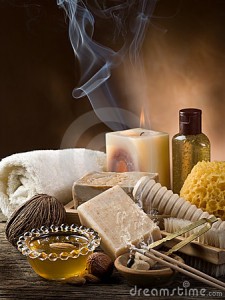Aromatherapy for Beginners
For anyone looking to start up basic, amateur aromatherapy, a lot of the prospective scientific concepts and ingredients involved can be really quite daunting. I remember when I first got into it as a hobby to do in my spare time. The range of products and possibilities dazzled me a little, so I didn’t really manage to achieve anything significant until I learnt about the real basics. So here is a run through of need to know information for wannabe aroma-therapists.
The practice of aromatherapy involves the blending of different essential oils to create remedies for varying ailments and also make up part of a therapeutic lifestyle. The benefits of aromatherapy can be reaped in a number of different ways, varying from skin absorption to inhalation.

Essential oils can be broken up into nine fairly broad categories; floral, wood, earth, herb, mint, medicinal, spice, oriental, and citrus. It’s hard to really recommend which types of essential oils mix well together as everyone obviously has their own personal fragrance tastes and it also depends on the sort of benefit you are seeking. And to be honest it would take out the fun of mixing and matching your own experimental remedies. A quick note however – perfume oils are different from essential oils as they do not possess the health or therapeutic effects when inhaled or applied to the skin, they simply smell nice!
Furthermore, essential oils are broken up into top, middle and base notes which are aspects to be taken into account when looking to experiment with blending. The logic behind this is that particular oils evaporate quicker than others in the blending process and are therefore broken up into notes, with top notes evaporating the quickest and base notes taking the longest. It is a fairly extensive list which I won’t put up here, but it will take you seconds to find a full comprehensive list online without a problem.
Much of the fun of aromatherapy comes from the experimentation of blending essential or organic oils and the creative aspect of this process. As a beginner it is best to use very small amounts to ensure minimal wastage during your experiments. Try to ratio out your blends of oils too, using different amounts of each oil note to achieve a different and interesting final blend. If you are a little unsure on which oils to go for you can pick up these ready prepared kitsthat have a range of essential oils that compliment each other for a collectively cheaper price.
For beginners I would recommend that you stick to vapour practice at first. This is done through burning the oils (individually or blended) in a diffuser or oil burner which secretes the vapours out into the room, and into your body and mind.


